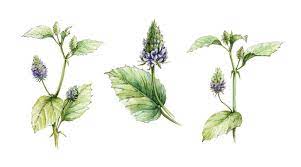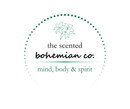Pronunciation
This must be one of the most mispronounced words I’ve come across. After much practice, I finally got it right - or so I thought. Turns out, I’ve also been mispronouncing the word for the last 3 years - since I first discovered it. The phonetic spelling of this miracle oil is buh·koo·chee·owl, and not buh·koo·kee·owlas I was led to believe. Just another reason to double check sources when doing research.
Origins
Bakuchiol is a natural retinol alternative derived from the babchi plant. Technically speaking, it’s a meroterpene isolated from the seeds of the babchi plant, also known as psoralea corylifolia. The seeds of plant contain a variety of coumarins which have been widely used for centuries in Ayurveda and Chinese traditional medicine to treat a variety of diseases.
Coumarins are natural bioactive compounds recognized for their anti-inflammatory, anticoagulant, antibacterial, antifungal, antiviral, anticancer, antihypertensive, antituberculous, anticonvulsant, antiadipogenic, and antihyperglycemic pharmacological activities, as well as its antioxidant and neuroprotective actions.

The coumarins specific to bakuchiol have been recognised to facilitate a multitude of biological properties including antioxidant, anti-inflammatory and antimicrobial activities.
Bakuchiol is a cosmetic ingredient that’s considered a true natural retinol alternative, without the irritation, photosensitivity or general concerns associated with traditional retinol products.
First isolated in 1966, bakuchiol is obtained through a monomolecular extraction from the seeds of the psoralea corylifolia plant. The monomolecular extraction process only extracts the one molecule, bakuchiol, with over 99% purity.
Because of its retinol like functionality, bakuchiol is generating lot of interest. It has been found to have no or little side effects when compared to retinoids, thus replacing the latter as the top anti-ageing molecules. And evidence suggests that bakuchiol has potential for further development, application and research.
The Psoralea Corylifolia Plant
Psoralea corylifolia is indigenous to semi-arid regions of India and the Himalayans of Pakistan and China. It’s a wild herb that grows 60 to 100 cm and takes about 8 months to mature. The seeds that contain bakuchiol are sustainably wild harvested between December and March every year.

To maintain biodiversity and sustainability, companies that manufacture products using babchi seeds must follow guidelines to avoid overharvesting and not contribute to agricultural exploitation.
All parts of the plant, including roots, stem leaves and of course seeds, are useful but it’s the powder and oil of the seeds that are most potent.
Babchi Oil and Bakuchiol – They Are Not the Same
So, what’s the difference between babchi oil and bakuchiol? The method of extraction is what sets them apart. Babchi oil is produced by cold pressing the babchi seeds, just like essential oils. Babchi oil does contain bakuchiol, but to obtain pure bakuchiol, the monomolecular extraction method mentioned earlier must be used.
Babchi oil, psoralea corylifolia seed extract and oil-infusions made from babchi seeds are not the same as bakuchiol – nor are they safe for your skin.
The monomolecular extraction creates a pure product that removes photo-toxic phytocompounds to make it safe for skin care application.
Cosmetic Ingredient
Although bakuchiol has been known for well over 45 years, it’s first commercial use in topical applications wasn’t until 2007 when Sytheon introduced it to the market under the name Sytenol A. Sytheon developed a unique process to propose the purest quality of bakuchiol (over 99% pure) on the market and reduce unwanted compound to traces. It is also the only version of bakuchiol registered by REACH, the regulation of the European Union, aiming to improve the protection of human health and the environment notably in cosmetics.

To ensure safety for our customers, the scented bohemian only uses Sytenol A by Sytheon in our Bakuchiol Day Renewal and our Restorative Facial Oil.
And speaking of safety, the maximum recommended percentage of bakuchiol in a facial care product is 1%, a standard set by the manufacturer and enforced by Health Canada Cosmetics Regulations.
Beware of products trying to one up its competition by going above this recommendation without any regard to the safety risk this poses to you, the consumer.
Bakuchiol Serum Benefits
Less irritating than retinol, bakuchiol is great for most skin types. It’s an ideal alternative for those of us with sensitive skin that are not able to tolerate retinol and suffer adverse effects from it. If you have finicky or reactive skin, send us a request for a sample and start with a patch test.
Consistency of use is key to getting your glow back! Results and benefits of this vegan serum come from daily use. Studies show visible improvements in fine lines, wrinkles, and elasticity. It reduces the appearance of uneven skin tone and dark spots. It’s anti-inflammatory and anti-bacterial properties make it an ideal acne treatment.

Bakuchiol boosts collagen and reduces enzymes that break down collagen and elastin. It also reduces inflammation and DHT receptor activity. DHT is an androgen which causes acne. It’s no wonder we see visible results after only few weeks of use, and more significant improvements in as little as three months.
Bakuchiol will not cause photosensitivity like retinol and can be used with other skin care products and treatments.
Final Thoughts
Be sure to choose a bakuchiol serum that does not contain babchi oil, babchi extract or psoralea corylifolia seed extract. And to avoid skin irritation and other issues, stay away from ingredients like fragrance, petrochemicals such as mineral oil, photosensitizing essential oils, parabens and dyes.
So, what are you waiting for? Get your Bakuchiol Day Renewal and your Restorative Facial Oil today!
Not an email subscriber? You're missing out on discounts! Scroll to the bottom and our home page and sign up!




